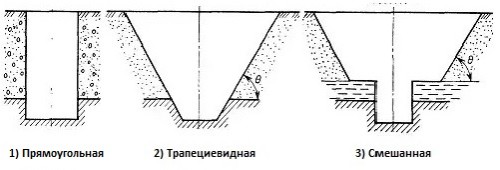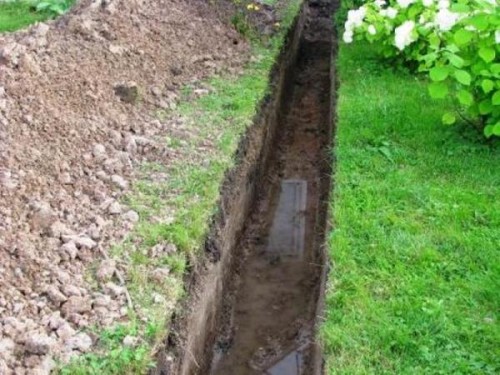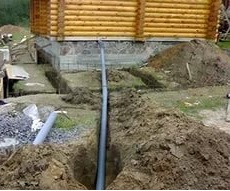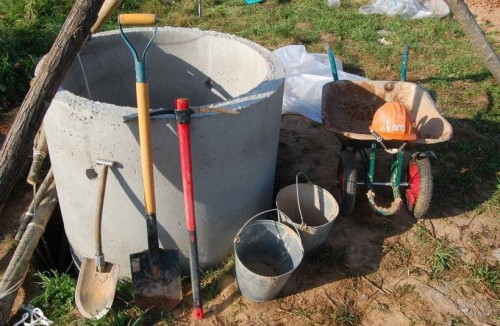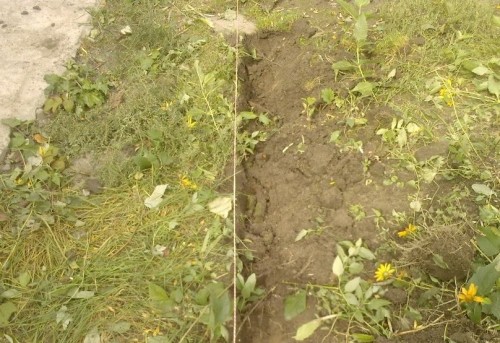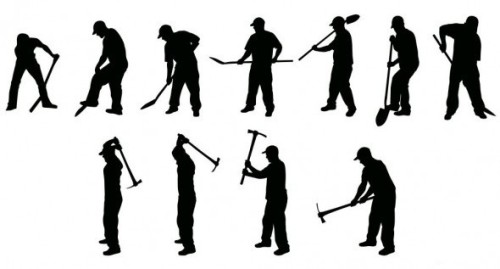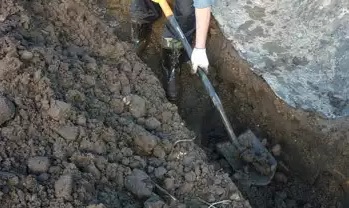
How to independently unscrew the trench under the water pipe in the country area Useful advice,Construction,Plot.
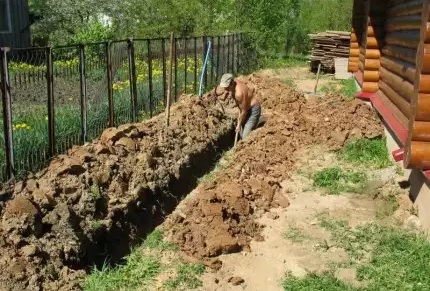
Laying underground water supply is an integral part of the work on the arrangement of the country area. To lay the water pipes, you need to dig a trench in the country area. To dig a trench, you can hire specialists (good now it is not difficult), but you can do everything yourself.
Content
In order to decide on their own to dig a trench for a plumbing manually, look at how much it is in the service market. For example, the average price to dig a trench (followed by backfilling and depending on the soil), the excavator will be - from 300 to 1500 r. / M³ (plus the excavator delivery is about 5000 p.), And dig a trench manually - from 500 to 1200 r. / m³. In addition, the layout and markup will also require payment, and this is about 5000 p.
Most likely you will decide on an independent digging of trenches. Therefore, further speech and go about how it is done.
Planning and calculation of trench for water pipe
If the plumbing is planned autonomous, then it does not require any permissive documents.
Even if you are confident in the absence of any communications on your site, you still need to check this information. For this, it is enough in the appropriate institution in terms of the site to agree on the passage of various communication cables, electrical cables, gas pipelines, sewage, etc., as well as the depth of their occurrence. If there are other communications trench on the development site, it will need to be considered when planning the location and direction of the trench. With parallel laying of the water supply system for a plot with other communications, are guided by construction standards and rules (SNiP).
It is necessary to observe the following distances horizontally from the stacked tap pipe to:
- sewage - 0.2 between the outer walls;
- power cables - 0.5 m;
- gas pipeline - 1 m;
- thermal networks - 1.5 m;
- water pipes - 1.5 m.
Distances that need to be observed vertically will be reviewed in the section - tranche depth.
When laying the water supply under roads or other power plots, it is recommended to plan this intersection at an angle of 90º, which will significantly reduce the area of \u200b\u200bthe plot that will be exposed to large loads.
Choosing a shape of the cross section of the trench
Depending on various factors, you may need to choose the shape of the cross section of the trench. It happens three types:
- rectangular;
- trapezoidal;
- mixed.
The rectangular cross section requires minimal labor costs, as it has a small width of the soil removal. However, it requires fastening of vertical walls at a large required depth. The trapezoidal form does not require the mounting of the walls and is convenient for work, but much more time-consuming and occupies a large area of \u200b\u200bthe plot. The mixed form of section can be useful where the depth of the trench reaches groundwater.
Trench width
The width of the trench for water pipes of a large diameter or at the depth of the occurrence, more than 3 m is defined by SNiP. However, it is unlikely that it will be needed in the country area, as well as the gate of the trench of the excavator when the width of the trench is determined by the cutting edge of the bucket. With a handmade button or using a motor-block or bar (trench or primer), the usual trench width is 0.5-0.8 m. To ensure normal conditions for the work on the extraction of soil and laying the pipeline, the smallest allowable distance between the vertical walls of the trench should be at least 0.7 m.
Tranche depth
The depth of the trench depends on several factors. First of all, this type of soil. The harder and stony soil, the more physical efforts. In this case, it is better to choose a minimum depth, which is determined by SNiP as 0.5 m from the top level of the pipe, it will ensure the maintenance of the pipeline from possible external loads. If it is necessary to plunge the pipeline more than 1 m, the mounting of the vertical walls of the trench may be needed. Depending on the type of soil, the vertical walls of the trench are mounted with gluings in sandy and large-graft soils, in the sugges - more than 1.25 m, in loam and clays - more than 1.5 m and in very strong loams and clays - more than By 2 m. When laying the water supply under roads or other powerful areas, according to SNiP, the distance from the upper plane of the tap pipe or its casing to the outer surface should not be less than 0.6 m.
The following factor affecting the depth of the pipeline laying is the ability to conduct preventive and repair work upon subsequent operation of the pipeline. Here it is necessary to proceed from the lowest possible blowout of the system of water pipes, taking into account other factors.
If it is required to build a water supply system that ensures irrigation of water in winter and non-heightening it in summer, then the climatic conditions will need (the minimum temperature in winter, the nature of the primer of the soil, the thickness of the snow cover and heating the surface of the Sun). The depth of the primer of the soil can be determined from the SPI or from the table in accordance with the region of finding a landscaped area:
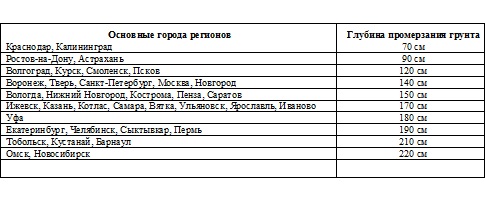
Read more The question of calculating the depth of the primer of the soil is considered in the article " Calculation of a ribbon foundation under the house" In any case, the plumbing pipe is dwindled with 0.5 m below the calculated depth of the soil freezing. However, if you lay the pipes with heating (air or electric) or use thermal insulation materials, then the depth of the trench can be reduced. Thereby cutting the volume of earthworks.
If the water supply is planned to be operated only in the warm season, without presentation of requirements for water temperature, then again, you can use the minimum requirement to bundle the pipeline - 0.5 m.
When calculating the depth of the trench, it should also be borne in mind that the digging of the manually trench of the excavator can extract the ground from the depth of up to 1.5 m. Removing the soil with a greater depth of manual development will require the use of small equipment (lifts - conveyors of various types) or assistant with design, Allowing another method of extraction of the soil (for example, a bucket on the rope).
Another factor that can affect the calculation of the depth of the trench under the water pipe is, as mentioned above, the intersection of the site with other communications. According to SNiP, it is necessary to observe the following distances vertically from the laid tap pipe:
- from cables and pipelines of various purposes - no less than 0.6 m or if necessary 0.25 m;
- from sewage - no less than 0.4 m.
Preparation for glow of trench
After calculating the parameters of the trench and the preparation of the project scheme, you can proceed to the preparation phase. The plot for which the water supply is planned, must be cleaned of trees, bushes and garbage. If you need to use the power tools or other electrical devices, take care of the power supply of the appropriate power in advance. Be sure to think about the issue of storing materials and tools (if the site does not yet have such capabilities), as well as a place to fall in the extracted soil in areas where it will be difficult at the edge of the trench. When finding the place of soil falling on the opposite side of the trench from the place of removal, prepare the walkways from the boards for the transition.
Required material and tools
In order not to be distracted by loss of time and effort, you should prepare the following material and the tool in advance:
- twine (rope, thick thread, etc.);
- roulette, pencil, plumb and level;
- pegs;
- if necessary, fastening the vertical walls of the trench - the material for this (boards, fasteners, slopes);
- shovels (bayonet and scooping different lengths and shapes);
- kirk and scrap or perforator (jackhammer);
- car liner or soil carrying stretcher;
- hacksaw on wood and ax;
- hammer;
- gloves, safety glasses, headdress and clothing.
Trench markup work
In order to ensure the implementation of the entire planned, it is necessary to transfer the main chart of the trench with the plan scheme to the earth surface. To do this, on the land of the site with a twine and pegs, the contour pattern of the upper edge of the trench is transferred. At the same time, the appropriate tools from the above list (roulette, hammer, etc.) will be needed. Marking under the tap trench does not require high measurement accuracy such as, for example, under the foundation, and is not difficult.
Earthwalls
After conducting all preparatory work, you can proceed to the immediate step of digging the trench.
When digging trenches, the following recommendations exist in manual:
- Constantly use measuring instruments as the work is done to save an effort.
- Keep in mind that the volume of extracted loose soil is greater than the volume of exempted space exempted into the trench, so calculate the place for the extracted soil.
- When throwing extracted soil from the trench, it is necessary to follow so that it does not reflect back.
- If the top layer of the soil is fertile, then it can be postponed separately for further use for the purpose (this is a layer of approximately the height of the blade of the shovel).
- First, cut off one layer of soil and break it with a bayonet shovel, and then after it is extracted with a symptoms, proceed to the next layer, and so before the calculated depth of the trench.




